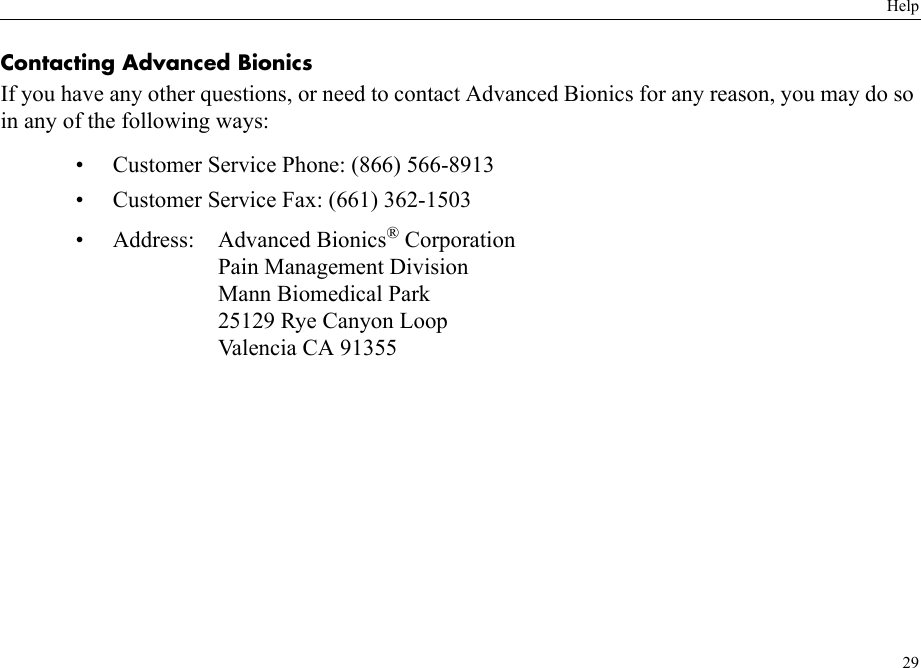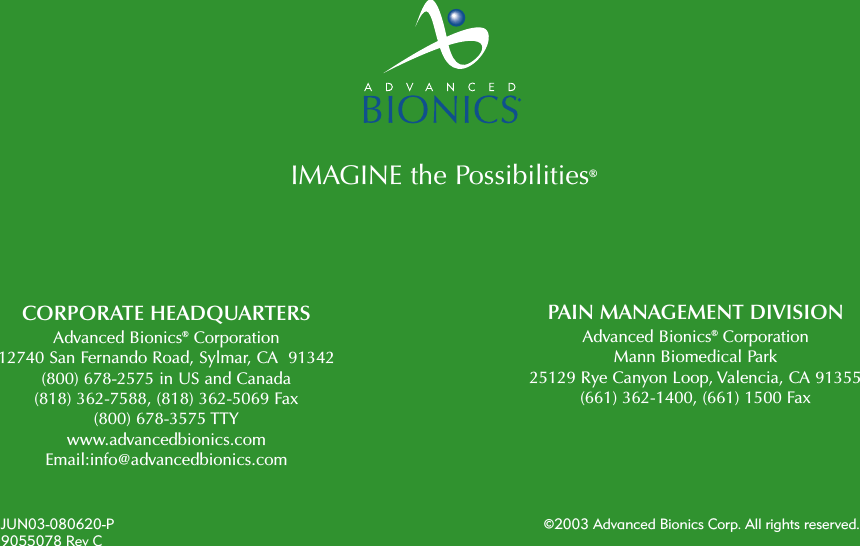Boston Scientific Neuromodulation SC-5300 SCS Implant System Charger User Manual SCS Patient Cvrs
Boston Scientific Neuromodulation Corporation SCS Implant System Charger SCS Patient Cvrs
Contents
- 1. patient system handbook
- 2. patient trial handbook
- 3. manual insert
- 4. physician implant manual
- 5. physician lead manual
patient trial handbook
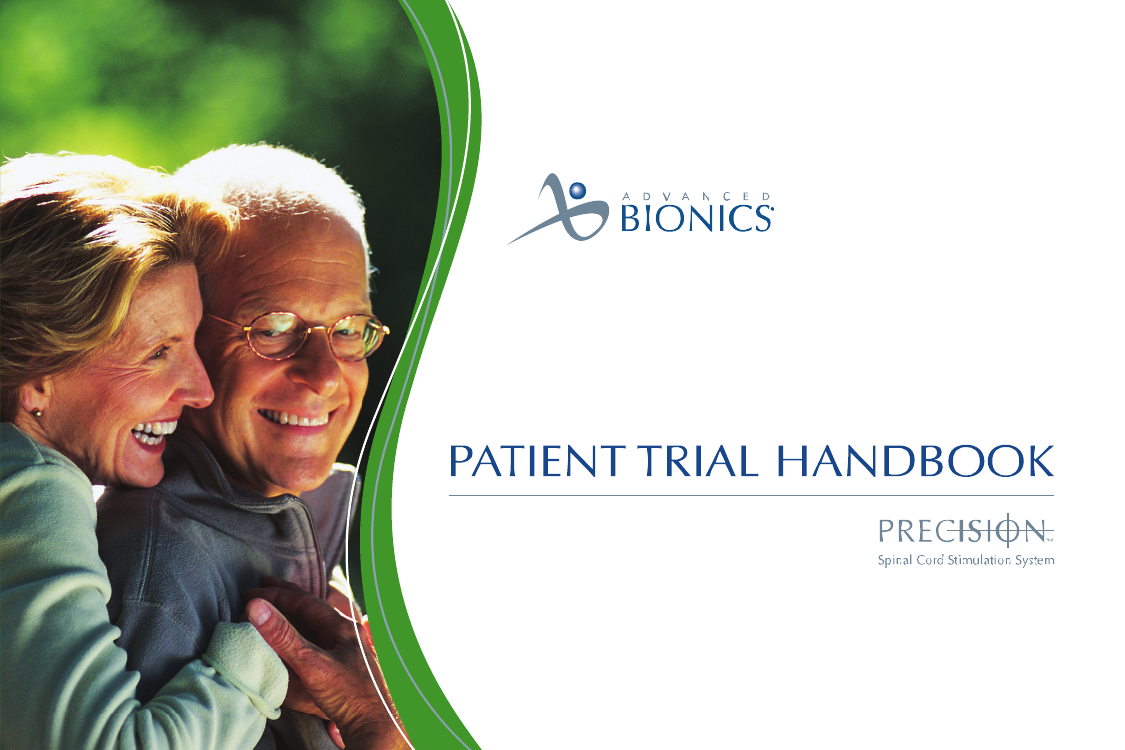
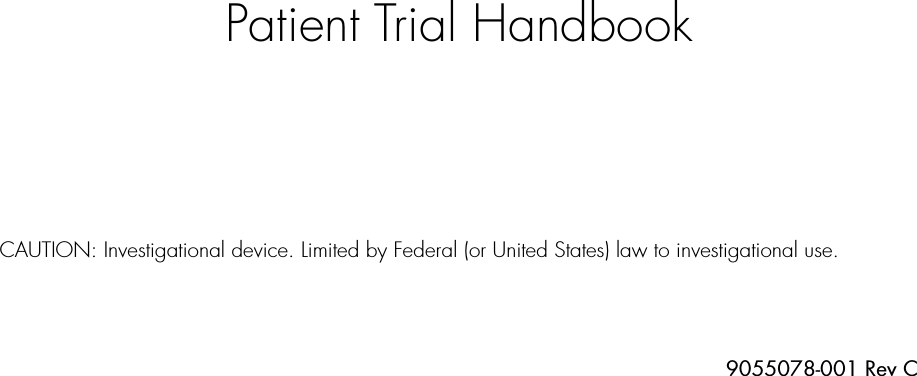
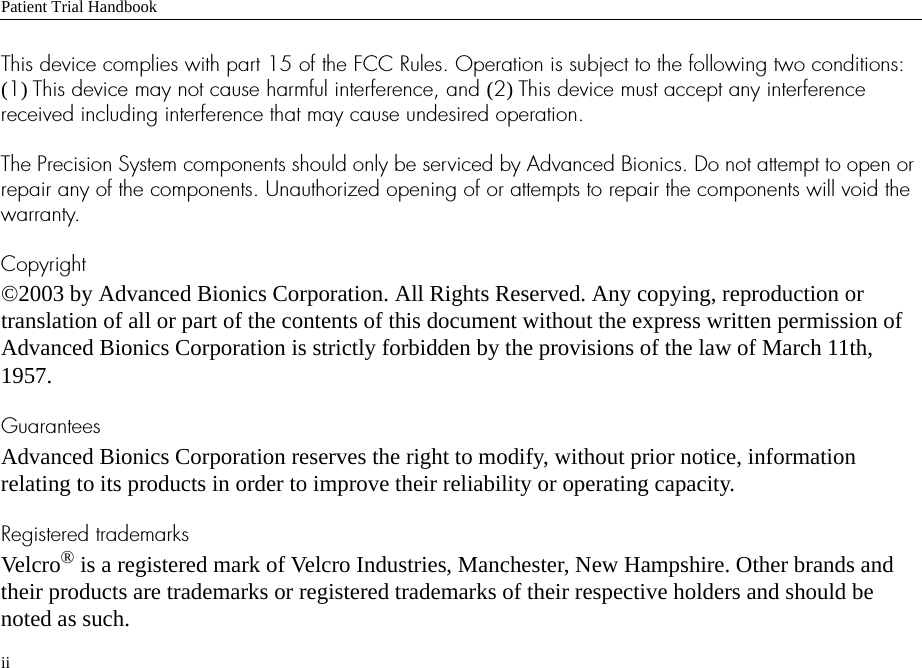
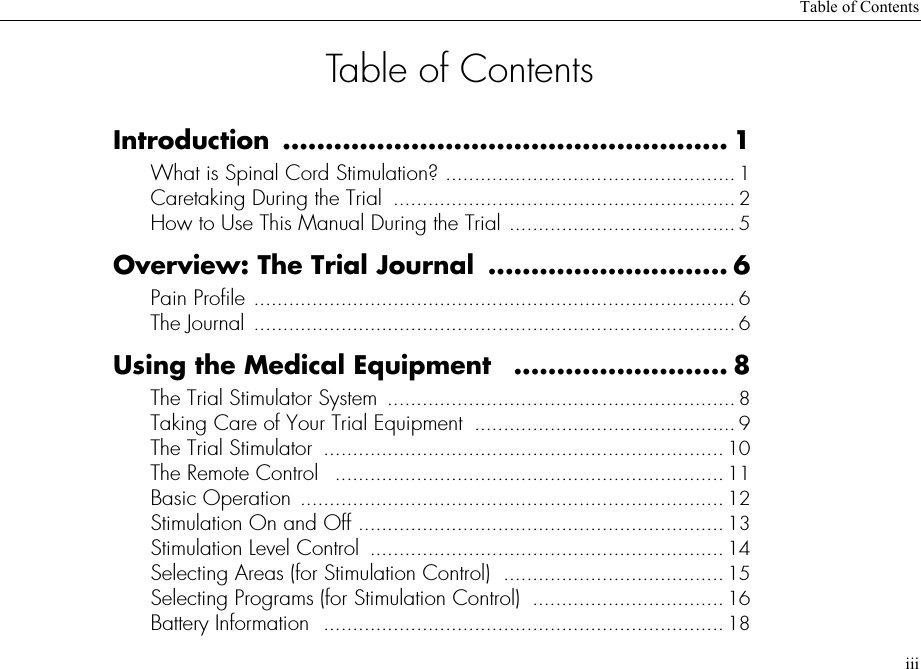
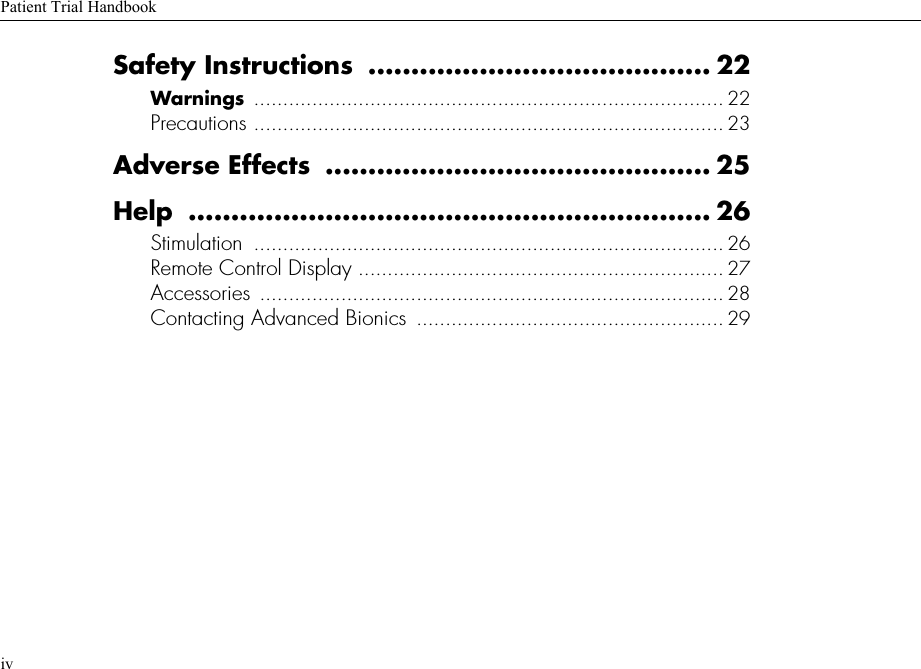
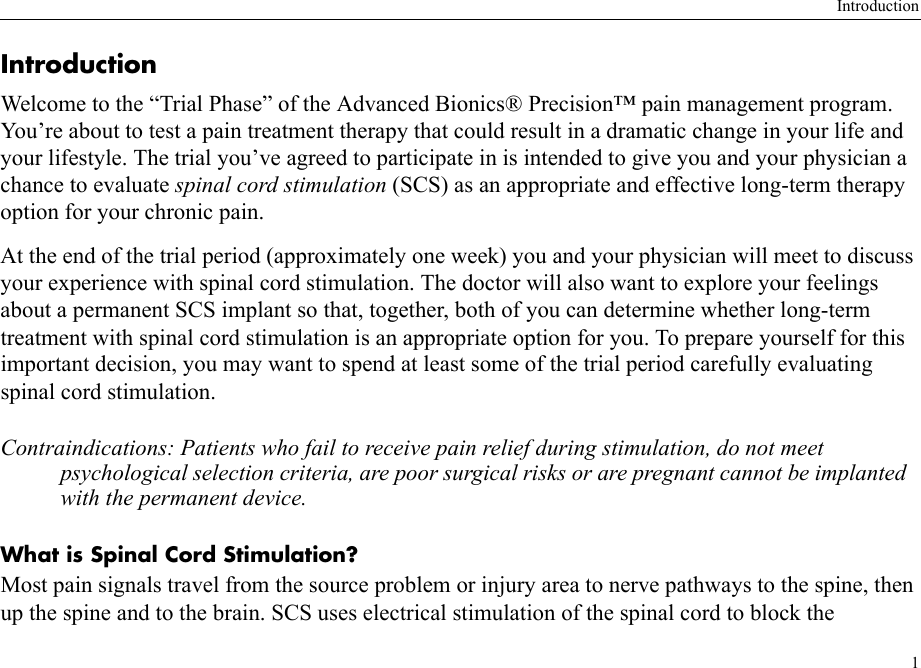
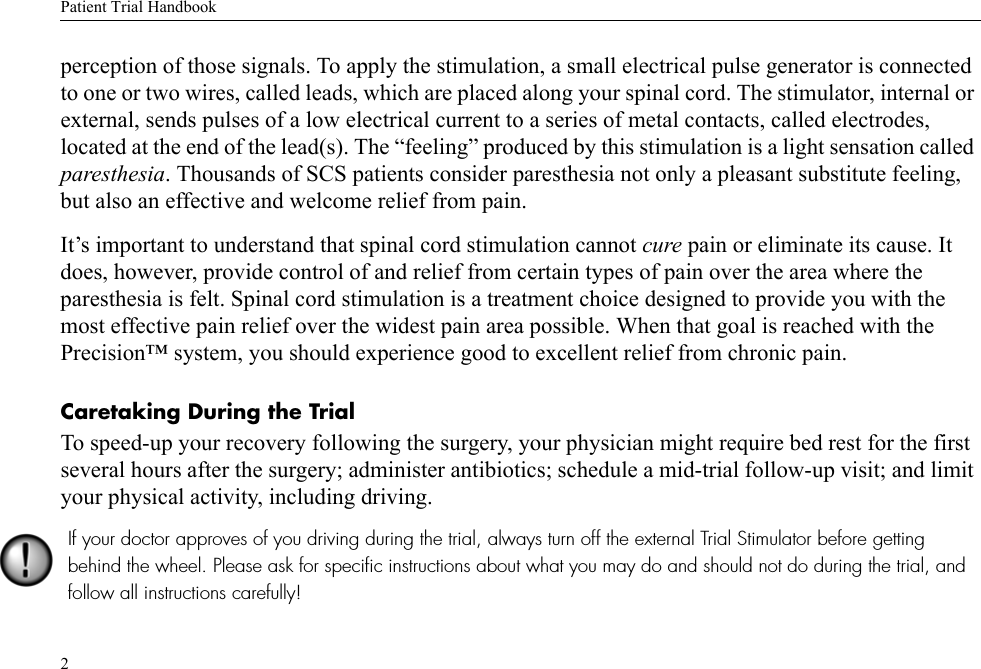
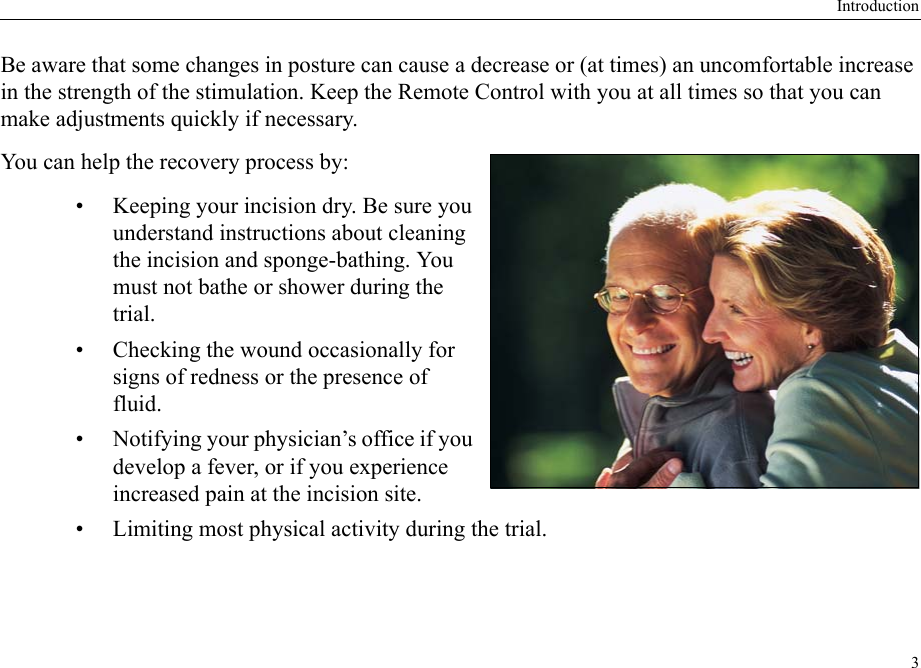
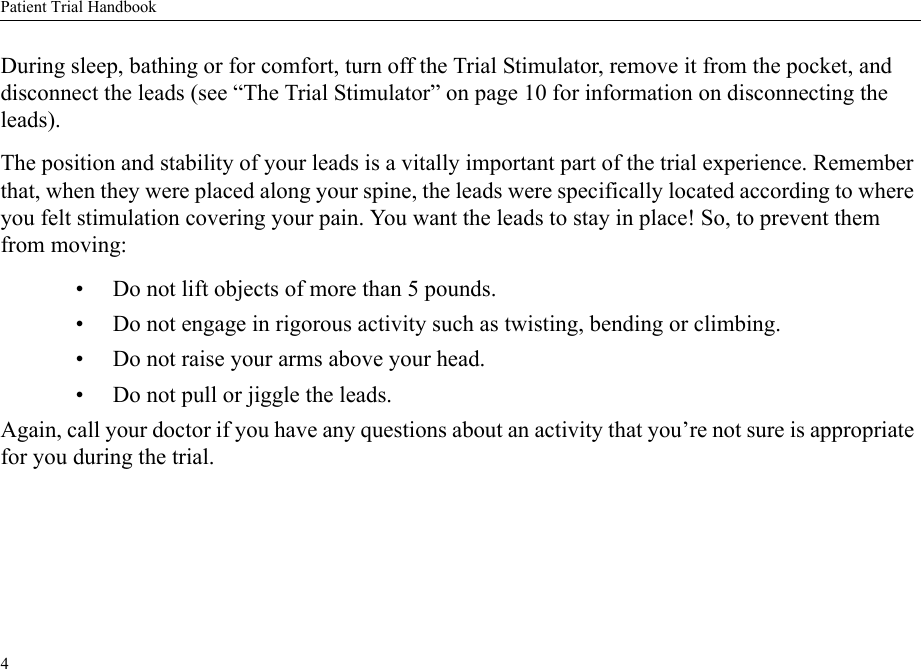
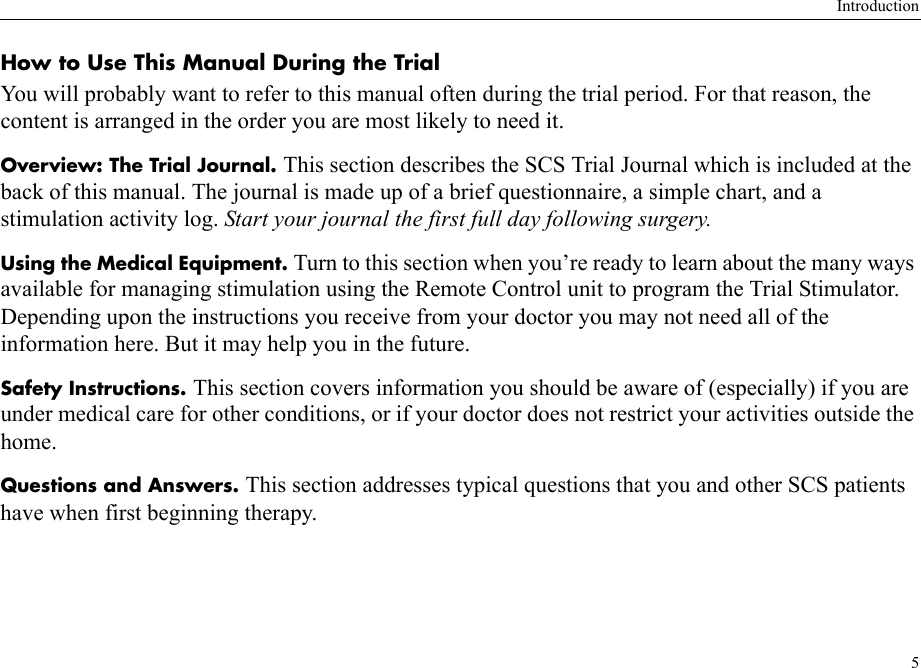
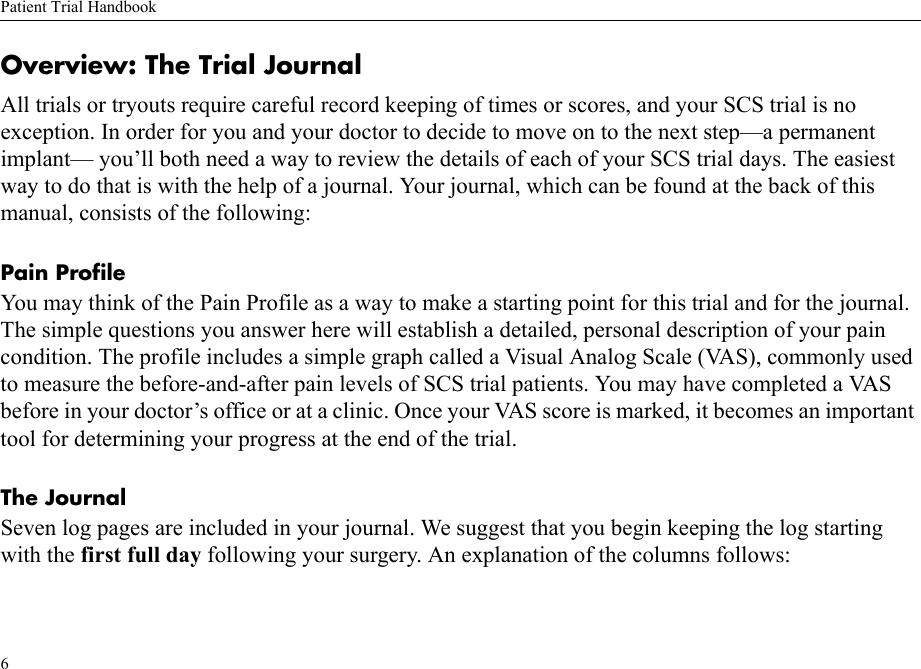
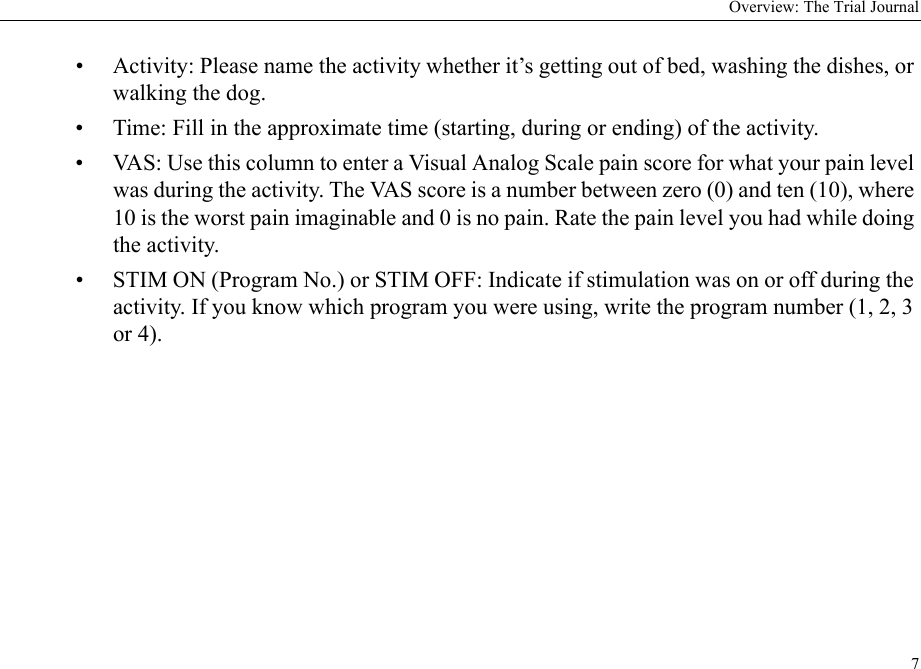
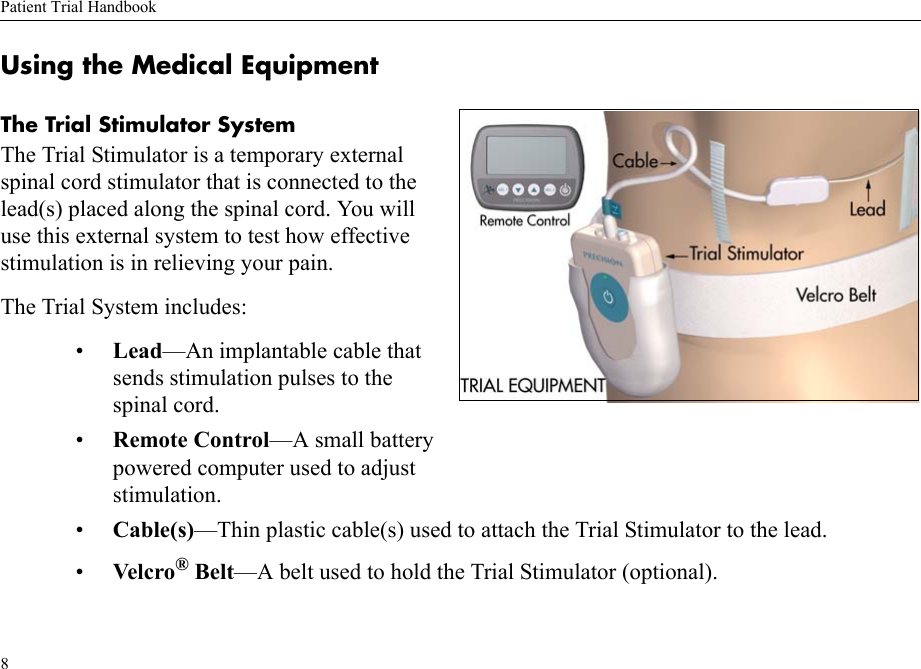
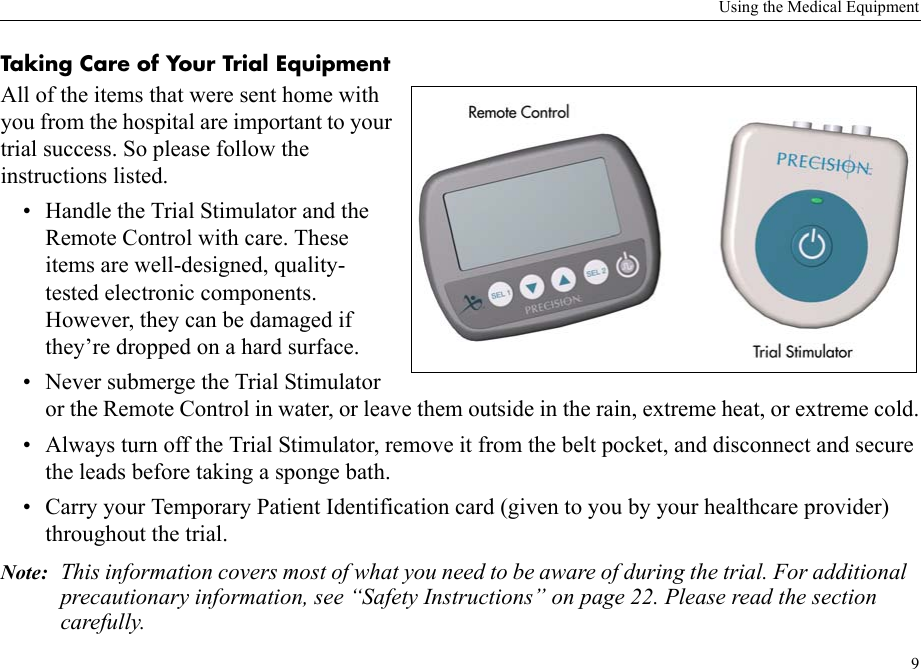
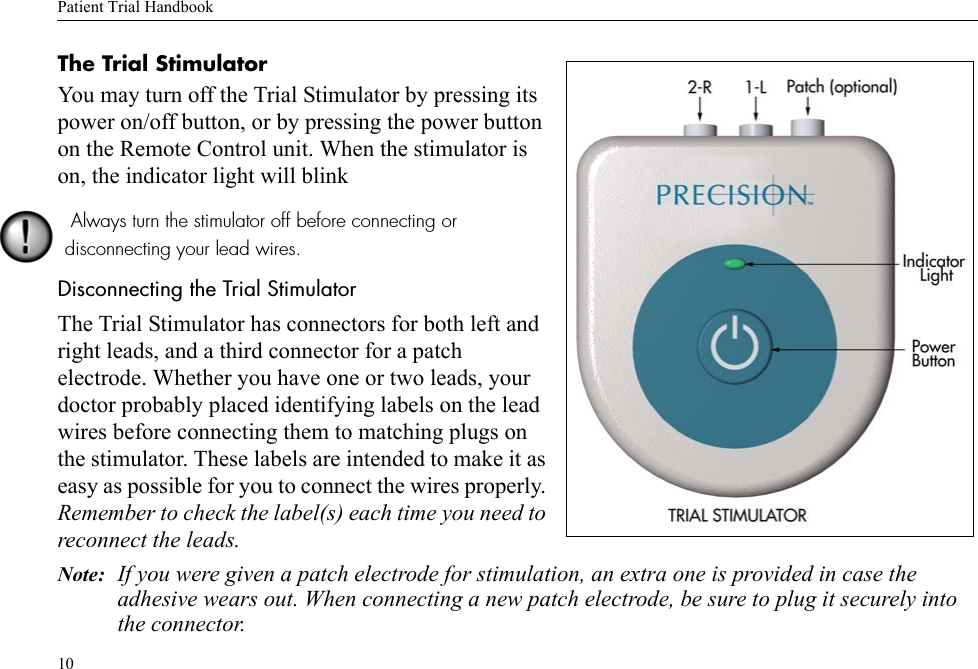
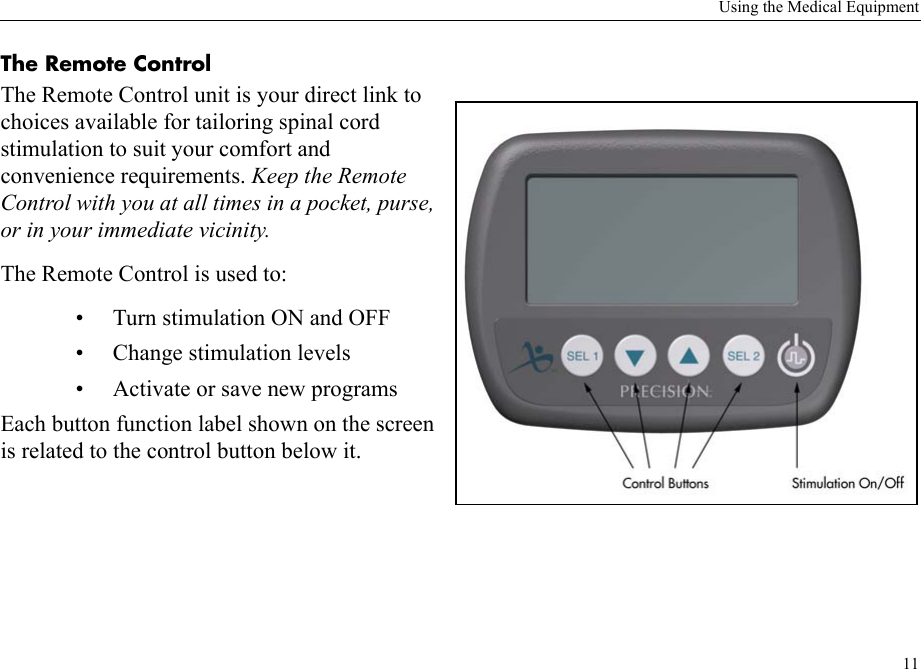
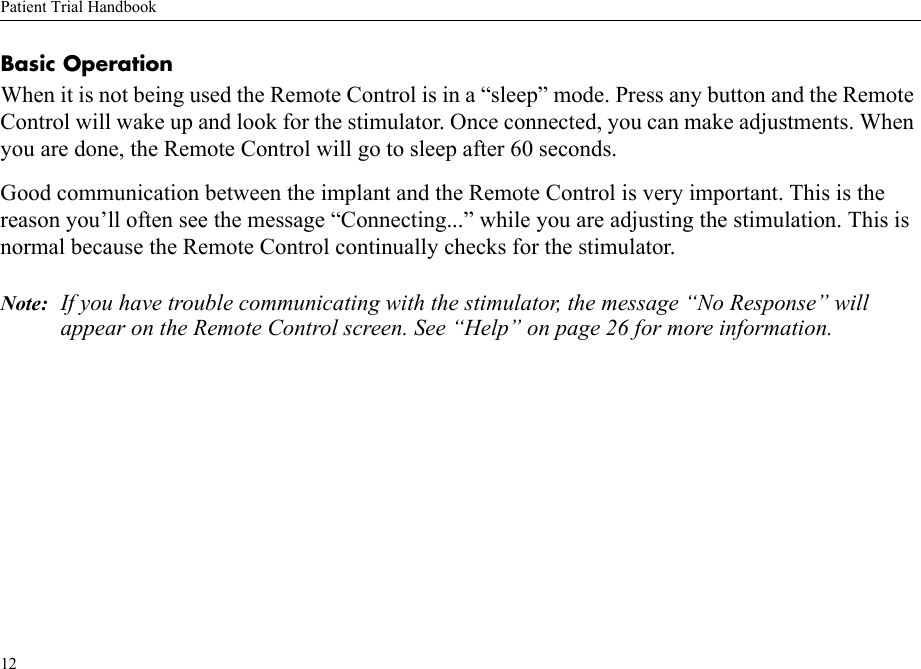
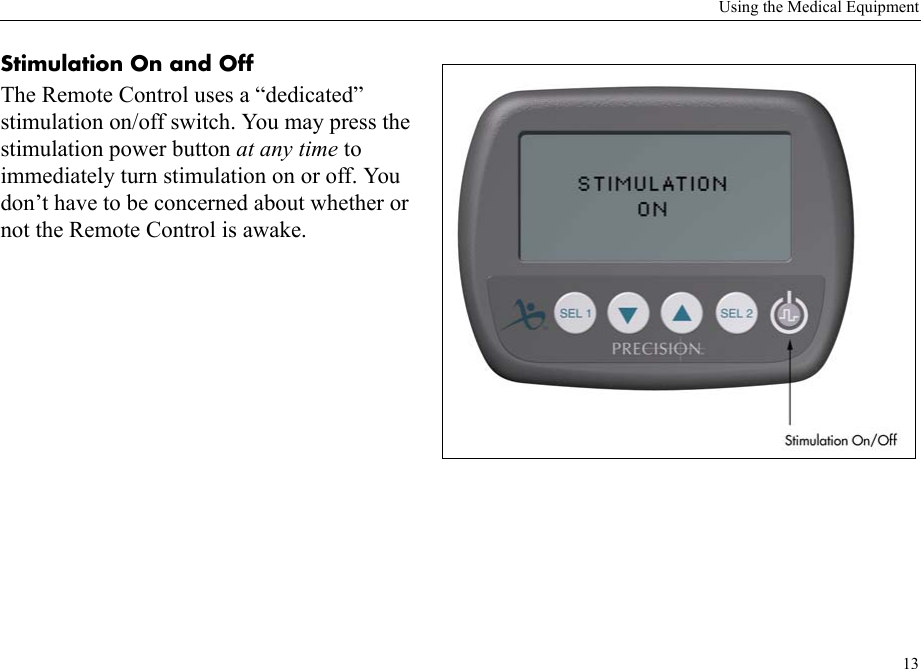
![Patient Trial Handbook14Stimulation Level ControlA few seconds after stimulation is turned on, the Remote Control displays the main screen. From here, you may press the [down] or [up] button to adjust the stimulation level (or intensity) until you’re comfortable. The main screen controls all stimulation, whether you have one area of pain control... or more than one.Note: • In some cases, health professionals can give you control over more than one stimulation area.•Multiple area control is available only if your system has been programmed to deliver stimulation to separate areas. If you do not have separate area control (for example, left leg vs.right leg) but feel that separate control might improve your stimulation therapy, speak to your health professional about this at your next visit.](https://usermanual.wiki/Boston-Scientific-Neuromodulation/SC-5300.patient-trial-handbook/User-Guide-356295-Page-19.png)
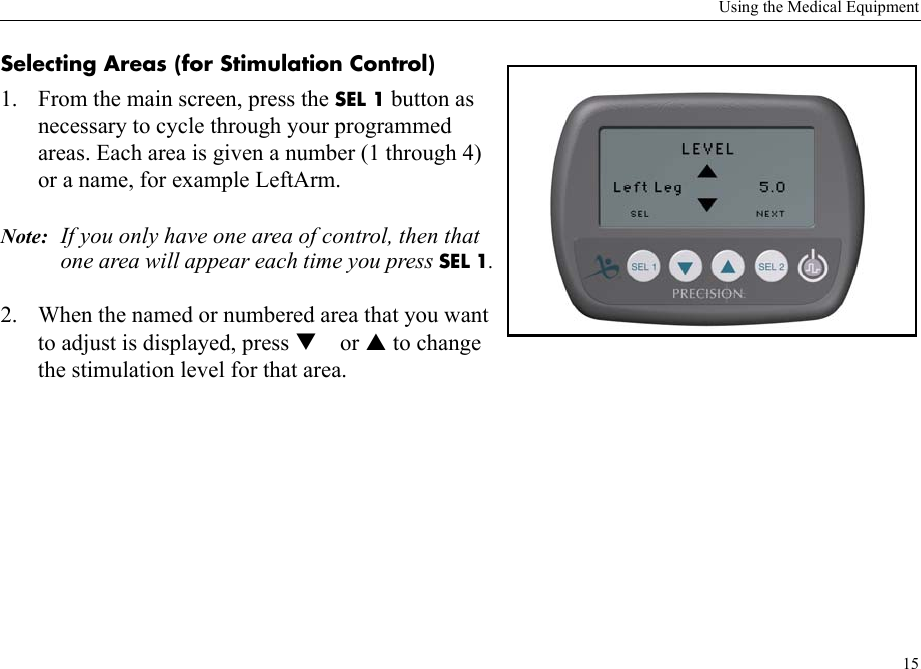
![Patient Trial Handbook16Selecting Programs (for Stimulation Control)Your Remote Control can store up to four stimulation programs which may have been set up by your healthcare professional. Each saved program will have certain differences in the settings. These differences allow you to vary your stimulation in many ways. You may have been encouraged to try and compare specific programs for different circumstances or times in your daily routine. This is especially helpful during the trial period. Program flexibility gives you and your healthcare professional a way to continually “fine-tune” your therapy. To select and activate programs:1. Press the SEL 2 [NEXT] button from the main screen to go to the program screen.2. Press the SEL 1 [SEL] button as necessary to choose the program you want to activate.](https://usermanual.wiki/Boston-Scientific-Neuromodulation/SC-5300.patient-trial-handbook/User-Guide-356295-Page-21.png)
![Using the Medical Equipment173. Once the desired program is highlighted, press [ACT] and that program will start running after a couple of seconds.Note: You might not have all four programs saved in your Remote Control. Empty program slots will have an * (asterisk) symbol beside the program number. If you try to activate an empty program, nothing will happen.Once you’ve selected and activated a program, you can adjust its stimulation level using the and buttons.If you make a stimulation level adjustment and decide that you prefer it, go back and select the program again, then press [SAVE]. The program will be updated with the new level.You may also save changes to any empty (*) program slot if one is available.](https://usermanual.wiki/Boston-Scientific-Neuromodulation/SC-5300.patient-trial-handbook/User-Guide-356295-Page-22.png)
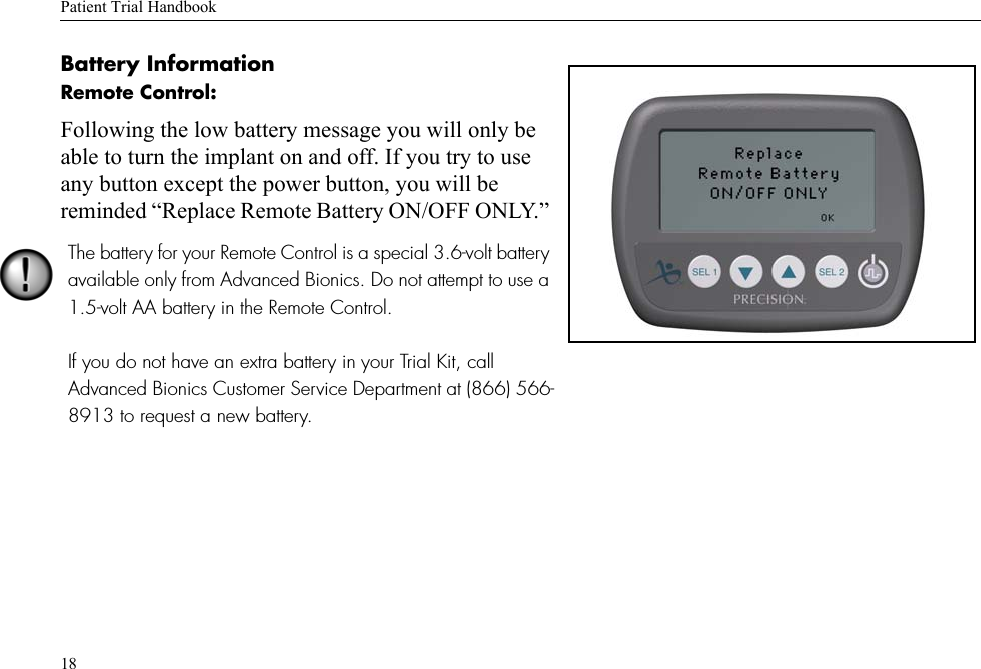
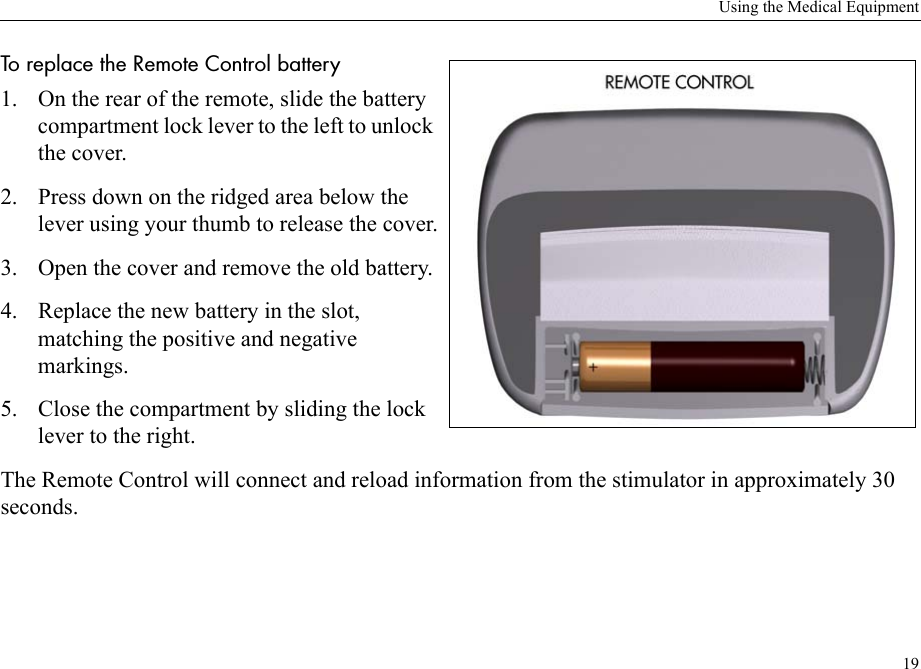
![Patient Trial Handbook20Trial Stimulator: If the message “REPLACE STIMULATION BAT-TERY” appears on the Remote Control screen accom-panied by a three-beep alarm, press SEL2 [OK] to acknowledge the message, then install a new battery right away.The battery for your Trial Stimulator is a 6-volt battery (lithium Duracell 28L). This type of battery can be purchased at most drug and convenience stores.](https://usermanual.wiki/Boston-Scientific-Neuromodulation/SC-5300.patient-trial-handbook/User-Guide-356295-Page-25.png)
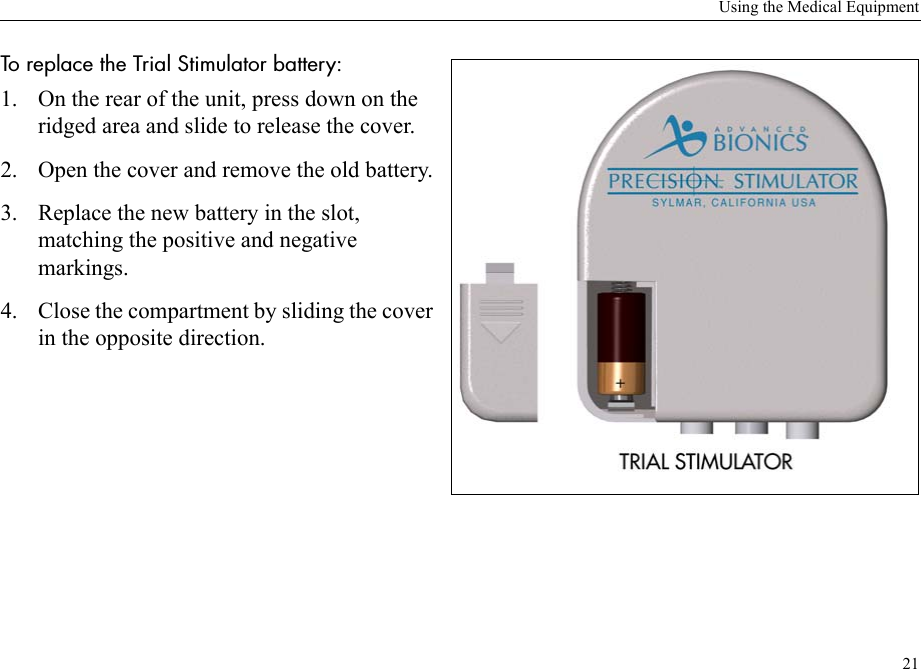
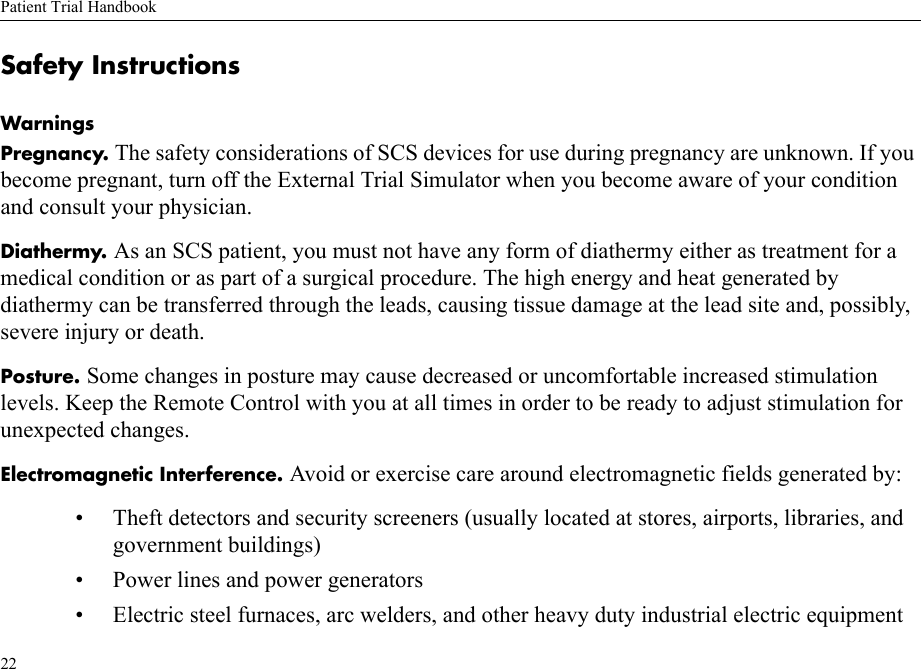
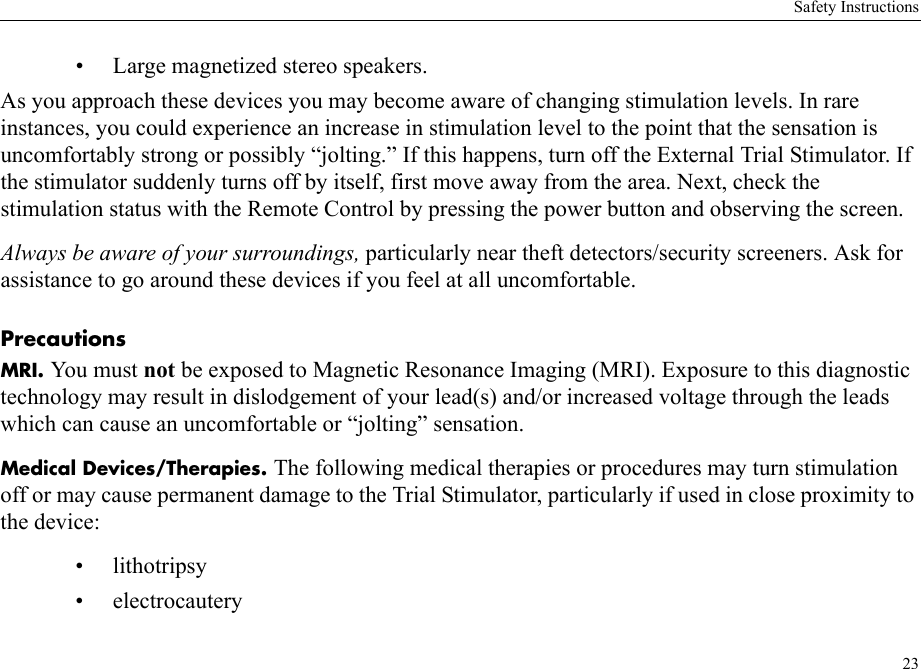
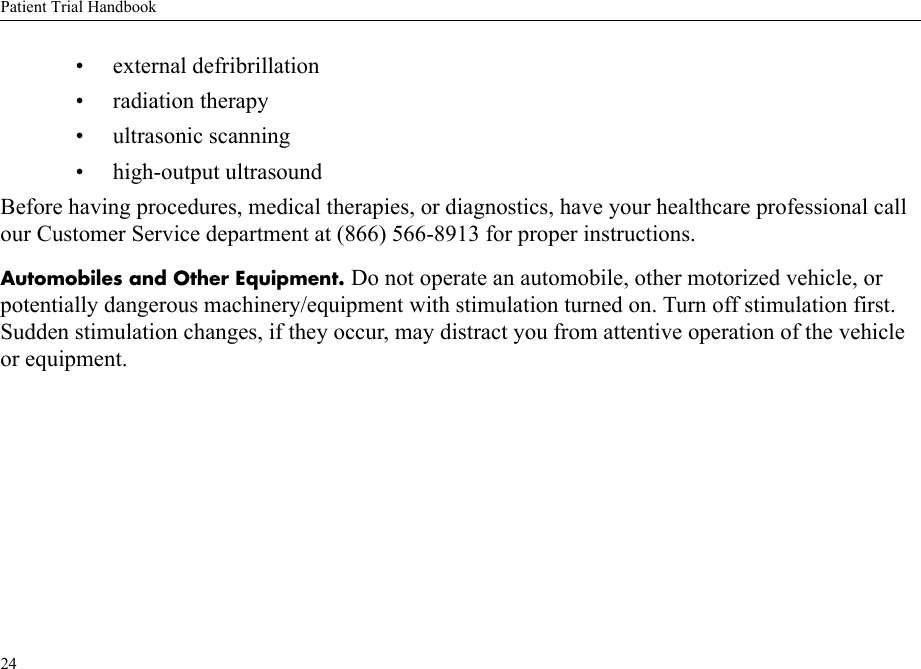
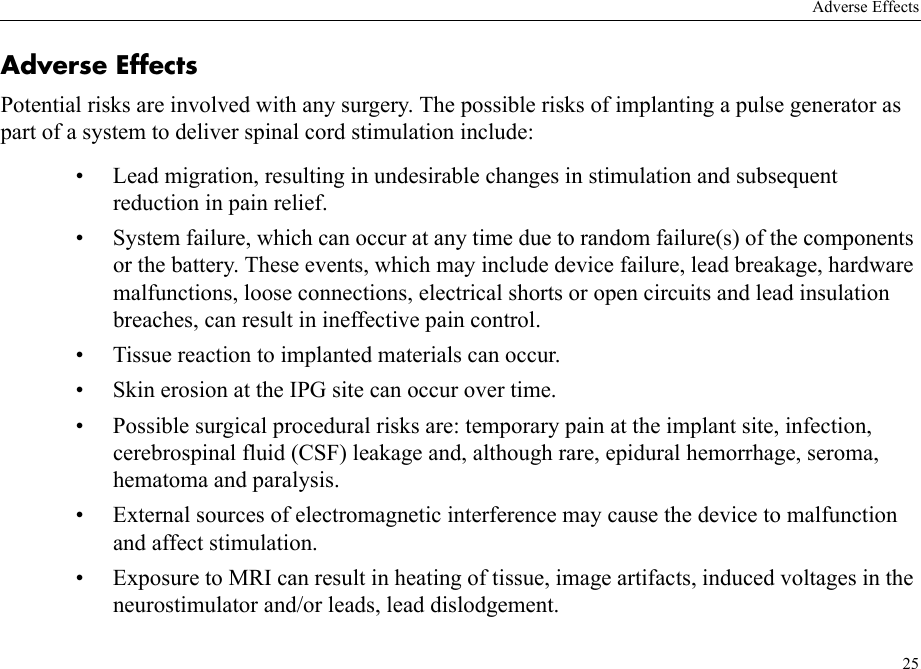
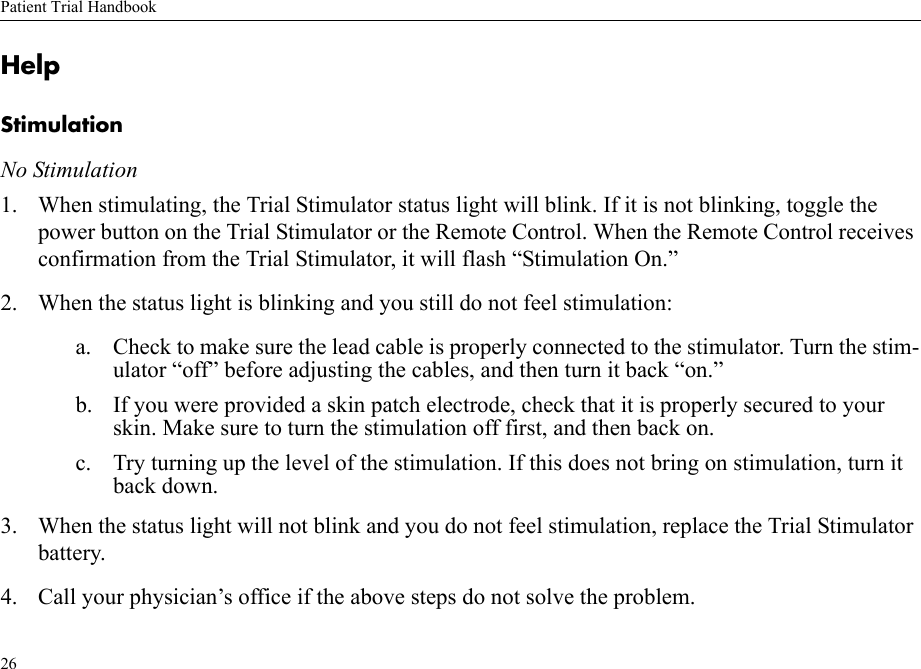
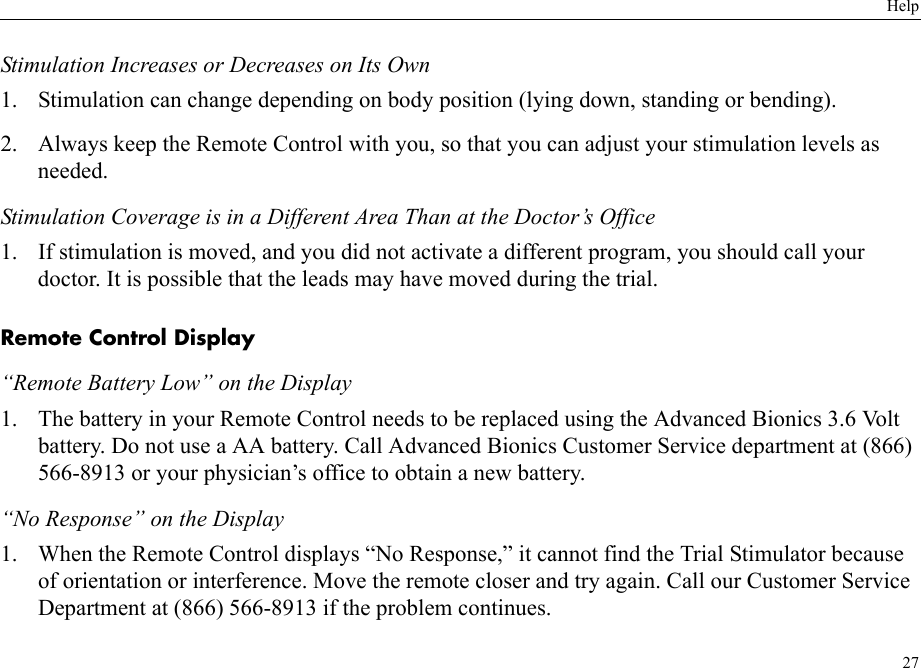
![Patient Trial Handbook28“Action Unsuccessful” on the Display1. When the Remote Control displays “Action Unsuccessful,” press [OK] and try the action again. If pressing [OK] does not clear the message, call your physician’s office.AccessoriesWashing the Velcro® Belt1. Wash the belt with mild soap and warm water.](https://usermanual.wiki/Boston-Scientific-Neuromodulation/SC-5300.patient-trial-handbook/User-Guide-356295-Page-33.png)
